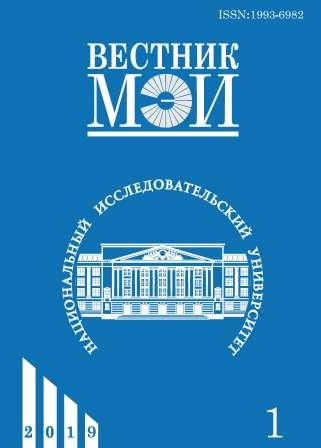Исследование степени выгорания пылеугольного топлива при обеспечении предварительного контакта с горячим воздухом
Аннотация
Механический недожог при сжигании пылеугольного топлива (ПУТ) в топках энергетических котлов связан с тем, что крупные частицы не успевают полностью сгореть за время пребывания в топочном пространстве. Обычно на угольных тепловых электростанциях пылепроводы высокой концентрации (ППВК) непосредственно подводят к основным горелкам и врезают в вертикальные воздухопроводы горячего воздуха. Данная схема подключения имеет ряд недостатков: пульсацию давления пылевоздушной смеси в пылепроводах, невозможность обеспечения раннего воспламенения из-за недостаточного прогрева пыли перед горелкой. Для решения этой проблемы (обеспечения более раннего контакта пыли с горячим первичным воздухом) в условиях Старобешевской ТЭС в 2010 г. была опробована схема подачи за счет врезки ППВК в канал первичного воздуха в районе бункера пыли. Это позволило полностью исключить подсветку пылеугольного факела газом при нагрузке 130 МВт и достичь снижения механического недожога на величину порядка 1%.
Исследованы трансформации ПУТ в процессе контакта с горячим воздухом до входа в горелочное устройство. Выполнен отбор проб топлива непосредственно под бункером пыли и перед горелками, находящимися на разном расстоянии от бункера. Установлено, что за время контакта с горячим воздухом от 0,5 до 0,9 с общее влагосодержание уменьшилось на 4…48%, а летучих на 6…25%. При помощи простейших расчетных оценок показано, что выделение такого количества летучих и их сгорание непосредственно после входа в топку дает тепловыделение, достаточное для прогрева топлива и первичного воздуха на несколько сотен градусов. Найденная закономерность объясняет физическую природу результатов по снижению механического недожога, достигнутых после переврезки пылепроводов и обеспечения более раннего контакта ПУТ с горячим воздухом.
Литература
2. Бирюков А.Б., Семергей В.А. Математическая модель выгорания пылеугольного топлива в топке энергетического котла // Вестник ДонНТУ. 2017. № 1. С. 32—37.
3. Бирюков А.Б., Дробышевская И.П., Рубан Ю.Е. Сжигание и термическая переработка органических топлив // Твердое топливо. Донецк: Изд-во Ноулидж, 2014.
4. Trinchenko A., Paramonov A., Kadyrov M., Koryabkin A. Numerical Research of Reburning-process of Burning of Coal-dust Torch // IOP Conf. Series: Earth and Environmental Sci. 2017. Vol. 90. Pp. 1—9.
5. Dubrovskiy V., Zubova M., Sedelnikov N., Dihnova A. Development of Energy Efficient Technologies for Burning Coal in Modern Thermal Power Plants and Efficiency Assessment Tools // EPJ Web of Conf. Thermophys. Basis of Energy Techn. 2016. V. 110. Pp. 1—3.
6. Ranade, V.V., Gupta D.F. Computational Modeling of Pulverized Coal Fired Boilers. Boca Raton: CRC Press, 2014.
7. Enkhjargal Kh., Salomatov V.V. Mathematical Modeling of the Heat Treatment and Combustion of a Coal Particle. Volatile Escape Stage // J. Eng. Phys. And Thermophys. 2011. Vol. 84. Iss. 3. Pp. 638—647.
8. Chernetskiy M.Yu. e. a. Using Ignition of Coal Dust Produced by Different Types of Mechanical Treatment Under Conditions of Rapid Heating // Combustion, Explosion and Shock Waves. 2016. V. 52. No. 3. Pp. 79—81.
9. Burdukov A. e. a. The Use of Mechanically Activated Micronized Coal in Thermal Power Engineering // Thermal Sci. 2016. V. 20. Suppl. 1. Pp. 23—33.
10. ГОСТ Р 52917—2008. Методы определения содержания влаги в аналитической пробе.
11. ГОСТ Р 55660—2013. Топливо твердое минеральное. Определение выхода летучих веществ.
---
Для цитирования: Бирюков А.Б., Семергей В.А. Исследование степени выгорания пылеугольного топлива при обеспечении предварительного контакта с горячим воздухом // Вестник МЭИ. 2019. № 1. С. 29—34. DOI: 10.24160/1993-6982-2019-1-29-34.
#
1. Pomerantsev V.V. i dr. Osnovy Prakticheskoy Teorii Goreniya. L.: Energoatomizdat, 1986. (in Russian).
2. Biryukov A.B., Semergey V.A. Matematicheskaya Model' Vygoraniya Pyleugol'nogo Topliva v Topke Energeticheskogo Kotla. Vestnik DonNTU. 2017;1: 32—37. (in Russian).
3. Biryukov A.B., Drobyshevskaya I.P., Ruban Yu.E. Szhiganie i Termicheskaya Pererabotka Organicheskikh Topliv. Tverdoe Toplivo. Donetsk: Izd-vo Noulidzh, 2014. (in Russian).
4. Trinchenko A., Paramonov A., Kadyrov M., Koryabkin A. Numerical Research of Reburning-process of Burning of Coal-dust Torch. IOP Conf. Series: Earth and Environmental Sci. 2017;90:1—9.
5. Dubrovskiy V., Zubova M., Sedelnikov N., Dihnova A. Development of Energy Efficient Technologies for Burning Coal in Modern Thermal Power Plants and Efficiency Assessment Tools. EPJ Web of Conf. Thermophys. Basis of Energy Techn. 2016;110:1—3.
6. Ranade, V.V., Gupta D.F. Computational Modeling of Pulverized Coal Fired Boilers. Boca Raton: CRC Press, 2014.
7. Enkhjargal Kh., Salomatov V.V. Mathematical Modeling of the Heat Treatment and Combustion of a Coal Particle. Volatile Escape Stage. J. Eng. Phys. And Thermophys. 2011;84;3:638—647.
8. Chernetskiy M.Yu. e. a. Using Ignition of Coal Dust Produced by Different Types of Mechanical Treatment Under Conditions of Rapid Heating. Combustion, Explosion and Shock Waves. 2016;52;3:79—81.
9. Burdukov A. e. a. The Use of Mechanically Activated Micronized Coal in Thermal Power Engineering. Thermal Sci. 2016;20;1:23—33.
10. GOST R 52917—2008. Metody Opredeleniya Soderzhaniya Vlagi V Analiticheskoy Probe. (in Russian).
11. GOST R 55660—2013. Toplivo Tverdoe Mineral'noe. Opredelenie Vykhoda Letuchikh Veshchestv. (in Russian).
---
For citation: Biryukov A.B., Semergey V.A. Studying the Pulverized Coal Fuel Burnout Degree in Ensuring Its Preliminary Contact with Hot Air. MPEI Vestnik. 2019;1:29—34. (in Russian). DOI: 10.24160/1993-6982-2019-1-29-34.




